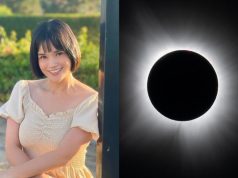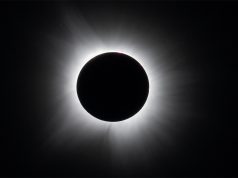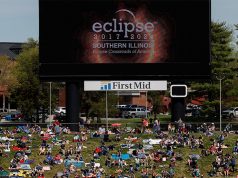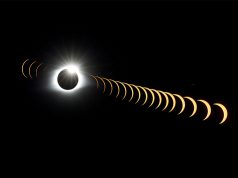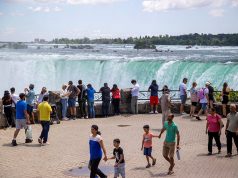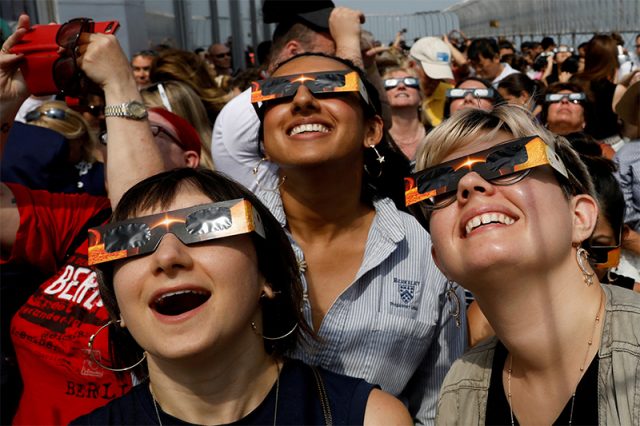
If you are one of the millions planning to view the total solar eclipse on April 8, there is a good chance that you will take pictures of your experience.
And, like many before you, afterwards you may find that those pictures don’t measure up to your expectations, experiences and memories of viewing the eclipse.
We offer some technical tips for eclipse photography, but we also consider why so many of us are drawn to photograph these kinds of collective moments of awe and wonder — as we think about the larger context of visual culture around solar eclipses throughout history.
Technical, safety challenges
Photographing a solar eclipse presents some technical and safety challenges. There are some preparations you can undertake, including ensuring your camera (even smartphone cameras!) has a solar filter. It is also important to be familiar with your camera, to practice using it in different light conditions before the eclipse.
The changes in light qualities will be quick and drastic, so familiarity with aperture and shutter speed will be important on the big day. A tripod will help reduce blurring when a longer exposure is required. If there are clouds, it’s still important to be cautious and wear protective glasses and the ability to capture an image will depend on the extent of cloud cover. The viewing experience will be different, but sky will still darken, creating changes in the color and the way light passes through the clouds.
There are also some more creative ways to think about capturing the experience, including making a pinhole projector.
This simple device can be made from a cardboard box and allows for both safe viewing and some interesting images.
First photographs of eclipses
But if your photographs don’t conform to your expectations, you are in good company. In 1842 Italian physicist Gian Alessandro Majocchi attempted to photograph the total solar eclipse that took place that July. Surviving records indicate he only had partial success: His resulting daguerreotype images — an early photography technique invented by Louis-Jacques-Mandé Daguerre in 1839, involving treating a silver-coated copper plate with light sensitive chemicals — are lost.
Majocchi was able to capture a few photographs before and after the moments of totality.
Reminder of wonder, togetherness
Apart from technical aspects, a successful photograph of the eclipse serves as a lasting reminder of the sense of wonder and the feeling of being part of something larger than ourselves.
This is the kind of event that brings people together, and the shared experience continues long after the eclipse ends through photographs that serve as memory markers and tangible proof that you were there to witness the eclipse. And even though many of us might end up with similar photographs, there is something significant about so many people taking pictures of the same event.
For example, taking photographs of events can increase a person’s enjoyment of the experience, as the research of marketing professor Kristin Diehl and colleagues has examined.
Photography allows us to preserve memories, share them with others and relive those moments in the future. What makes an image stand out among the millions shared daily on social media often comes down to a combination of factors: its visual impact, the story it tells and the emotional resonance it can hold for others viewing it. In other words, much of what we share is about the broader experience.
Proof of experience, connection across time
Photographs also have long fulfilled a deep-seated need for proof of experience. We were there. Whether a blurry cell phone image of the Mona Lisa or a snapshot of the eclipse, these images serve as tangible reminders of our experiences. They validate our memories, anchor the stories we tell and allow us to share these moments with others.
Looking at images of people taking in an eclipse during other eras can also offer a shared sense of connection across time. This is a phenomenon that is bigger than us and these images connect us to the experiences of previous generations.
Scientific photographs of an eclipse, like the ones Thomas Smillie made for the Smithsonian in 1900, may have been heralded as technological breakthroughs. Yet there is something especially compelling about photographs of people gathered together, stopping for a moment and looking skyward.
Photographs yield partial insights
A daguerreotype of a solar eclipse taken on July 28, 1851 is the first known successful photograph of the solar corona. This image was made at the Royal Prussian Observatory in Königsberg (contemporary Kaliningrad, Russia) by Johann Julius Friedrich Berkowski with the aid of a telescope. The 84-second exposure allowed Berkowski to capture the moment in incredible detail.
In 1890, the American Journal of Photography proclaimed “probably in no department of science, certainly in no branch of astronomical science, has photography been of such use as in the study of solar eclipses.” As the editors note, photography certainly can shape our understanding of the world, help to create new knowledge and provide valuable insights into the nature of the universe.
But there is also a limit to what photography can do. The experience of a solar eclipse goes beyond the visible: temperatures drop, the behaviour of nonhuman animals can suddenly shift and many report unanticipated emotional or spiritual responses.
Many visual, artistic responses
Further, there is a long history of eclipses being recorded in a range of different visual media. For example, the Shang Dynasty in China provides a visual record of solar eclipses via ancient script carved into oracle bones.
A 1610 painting by Peter Paul Rubens, called The Elevation of the Cross, illustrates the long and complex history of connections between phenomenon like eclipses and religious beliefs. In the early 20th century, American painter Howard Russell Butler produced a series of paintings in which he focused on aspects of the eclipse that were difficult to capture with black and white photography — the changing quality of light and colours of the sky.
The video accompanying David Bowie’s Black Star (2016) opens with a total solar eclipse.
This is evocative visual imagery that complements the song’s themes of mortality — and offers a nod to long-held understandings of an eclipse as a symbol of impending doom. This symbolism was especially poignant as this was the title track of Bowie’s last studio album.
These types of artistic responses to celestial events foreground personal interpretation and emotional responses. They also foreground and reflect social, cultural, and spiritual meanings associated with a solar eclipse.
Could the act of sharing our eclipse photographs provide a point of fusion between providing evidence and these less tangible — but equally valid — moments of engagement?![]()
Amy Friend, Associate professor, Visual Arts Department, Brock University and Keri Cronin, Professor, History of Art & Visual Culture, Brock University. This article is republished from The Conversation under a Creative Commons license. Read the original article.




